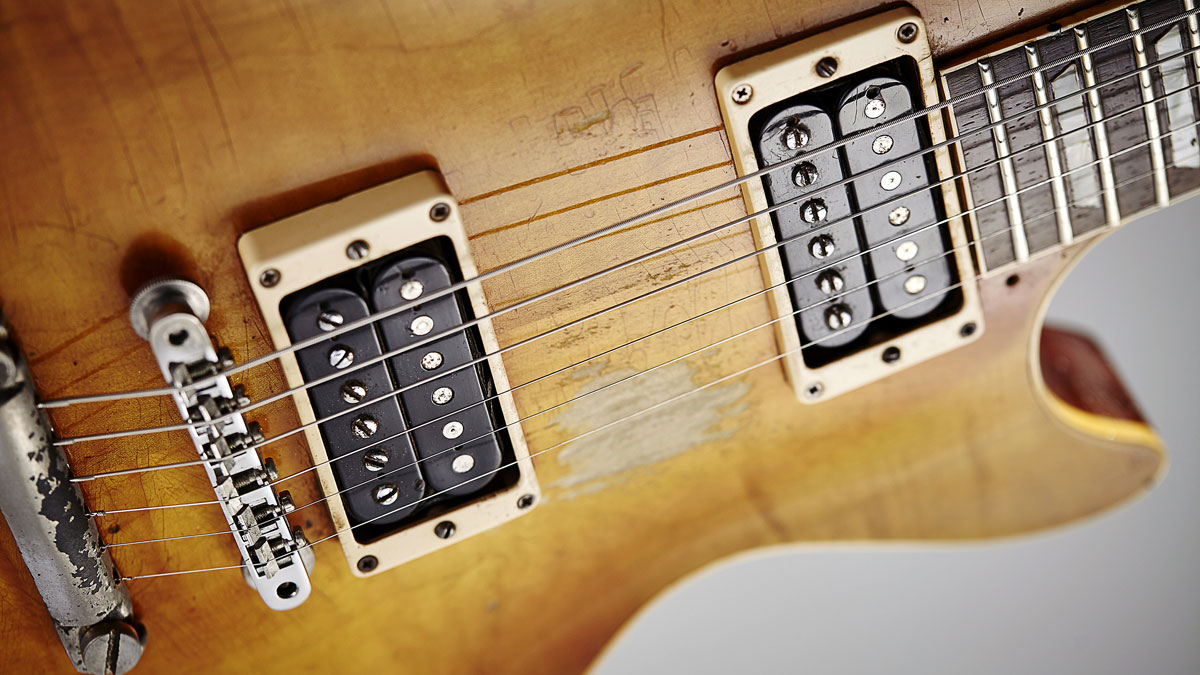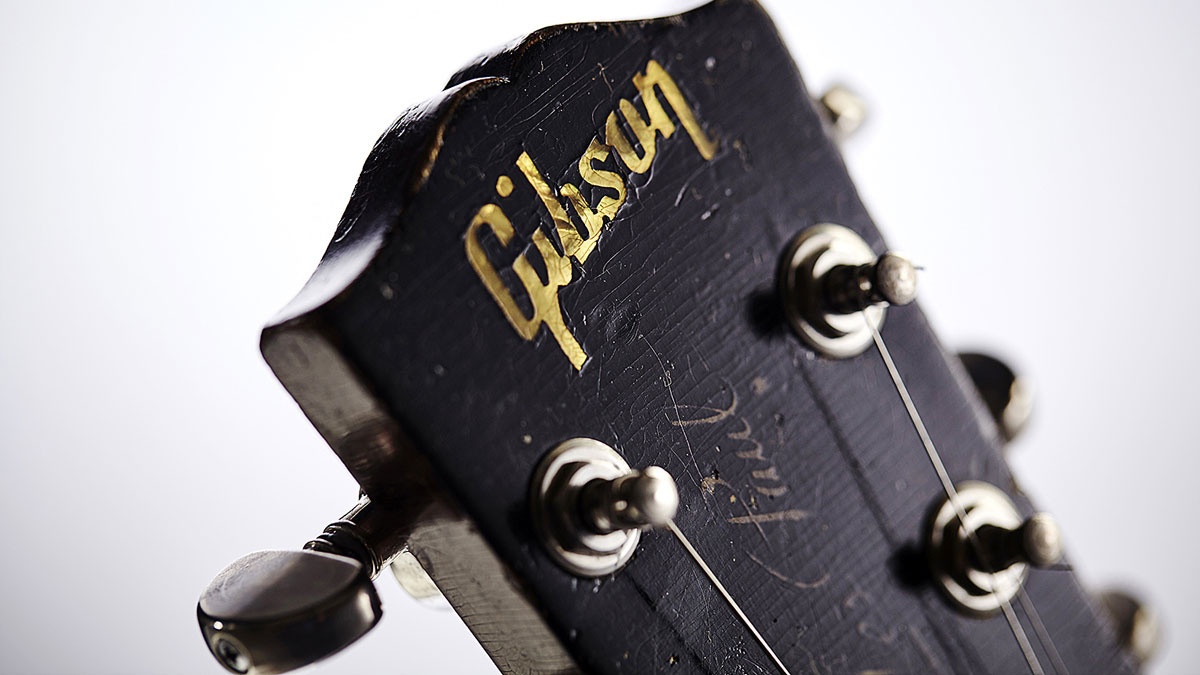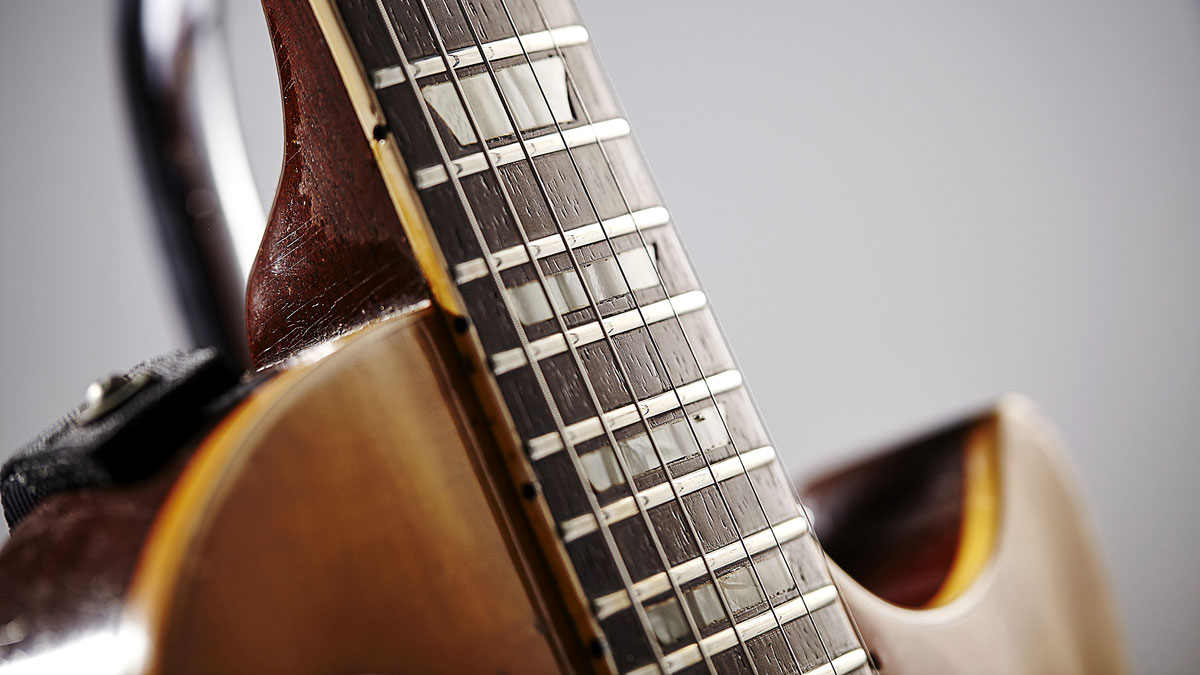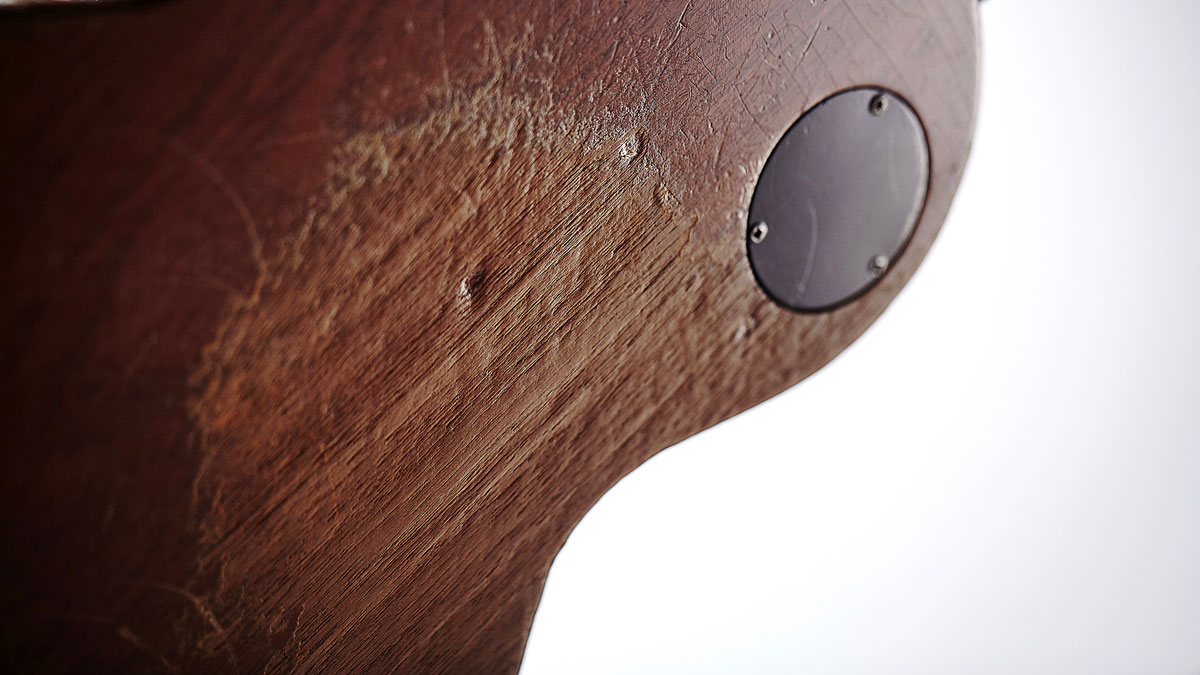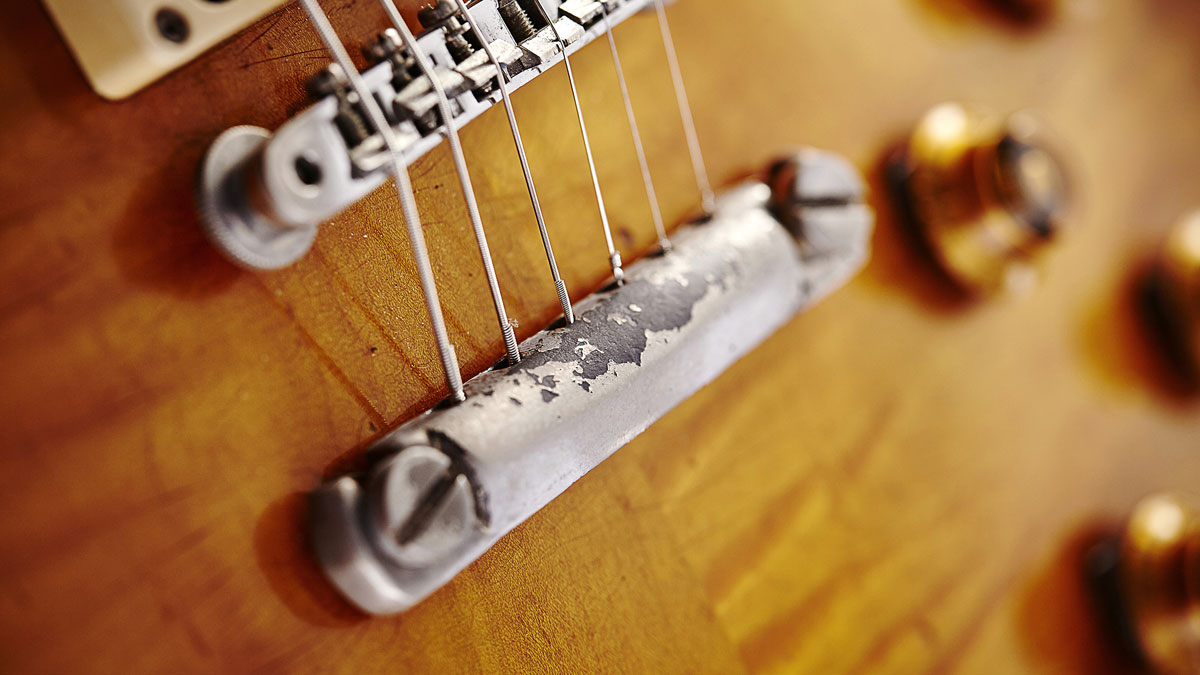14 of Gary Moore's finest guitars, amps and effects - in pictures
A VIP tour of Moore's '59 Les Paul and more with tech Graham Lilley
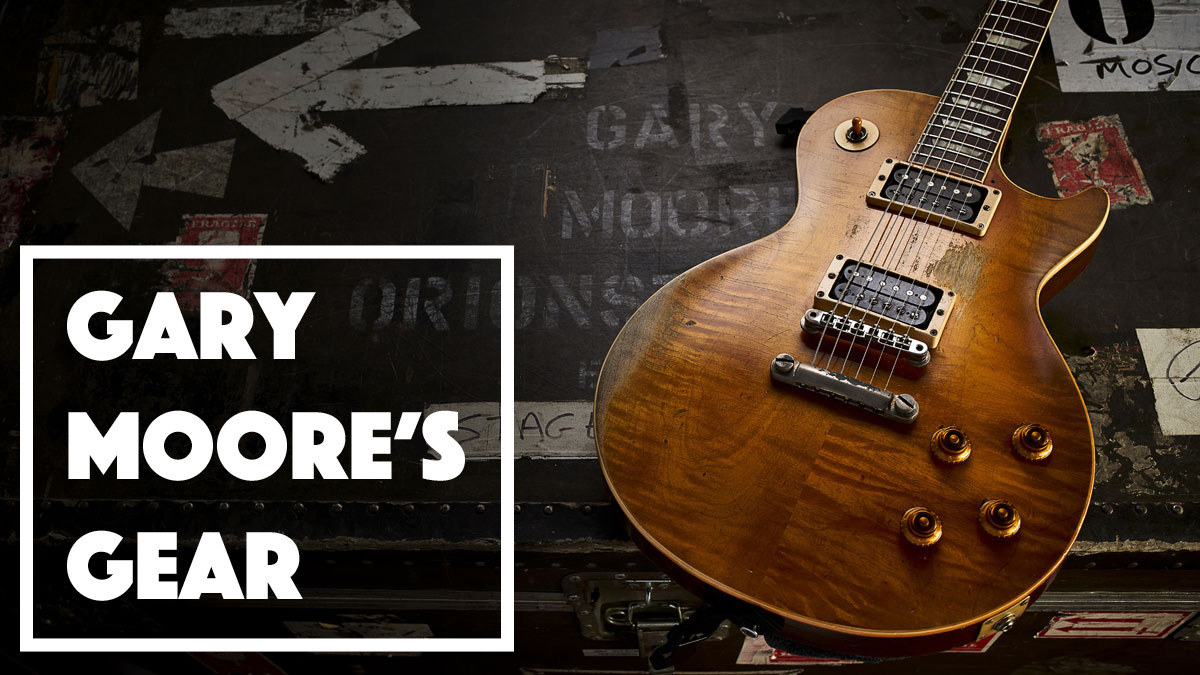
Introduction
For over two decades, Graham Lilley looked after Gary Moore and his gear, and got to know him better than almost anyone. Neville Marten asked Graham about working with Gary and got a guided tour of some of the great man’s six-string treasures.
My first encounter with Gary Moore was during the launch of his 1989 album, After The War, around the same time that Graham Lilley took on the role of Gary’s tech, a position that grew to personal assistant and so much more in the 20-odd years the two spent together.
We hit it off from that moment and discovered our mutual love of Clapton, Green, Hendrix, Beck
I was to interview Gary for a Guitarist cover story and we met at a London hotel. Slightly nervous, I arrived at his suite to be met by a man in ‘reserved’ mood. This isn’t so unusual when artists are thrust in front of an unknown journalist’s microphone to answer often inane questions; Gary was no different, and there was no reason he should warm to me.
The first 10 minutes or so were something of a struggle, until I proffered: “I noticed a few Peter Green ‘out-of-phase’ tones here and there,” or something to that effect. Gary’s expression changed from one of coolness to one of interest - animation even - upon realising that this chap might know at least a bit about guitars.
We hit it off from that moment and discovered our mutual love of Clapton, Green, Hendrix, Beck and co happened at exactly the same time and in much the same way.
We spent many hours over the years, chatting about his music and that of his heroes: on occasion, we sat around playing guitars together - he showed me the Hard Day’s Night chord as George Harrison had showed it to him, and I showed him the arpeggio run-down in Help!. I even got to play on stage with him (alongside Guitarist’s David Mead).
Graham was always present on such occasions and we also got to know each other. So it was poignant meeting up with him again - the first time since Gary’s death and in exactly the same studio where Gary played the infamous ‘Fire Alarm Blues’ to pick up where we left off - and pick through some of Gary's finest instruments.
Don't Miss
Gary Moore: the lost interview - in-depth with a guitar legend
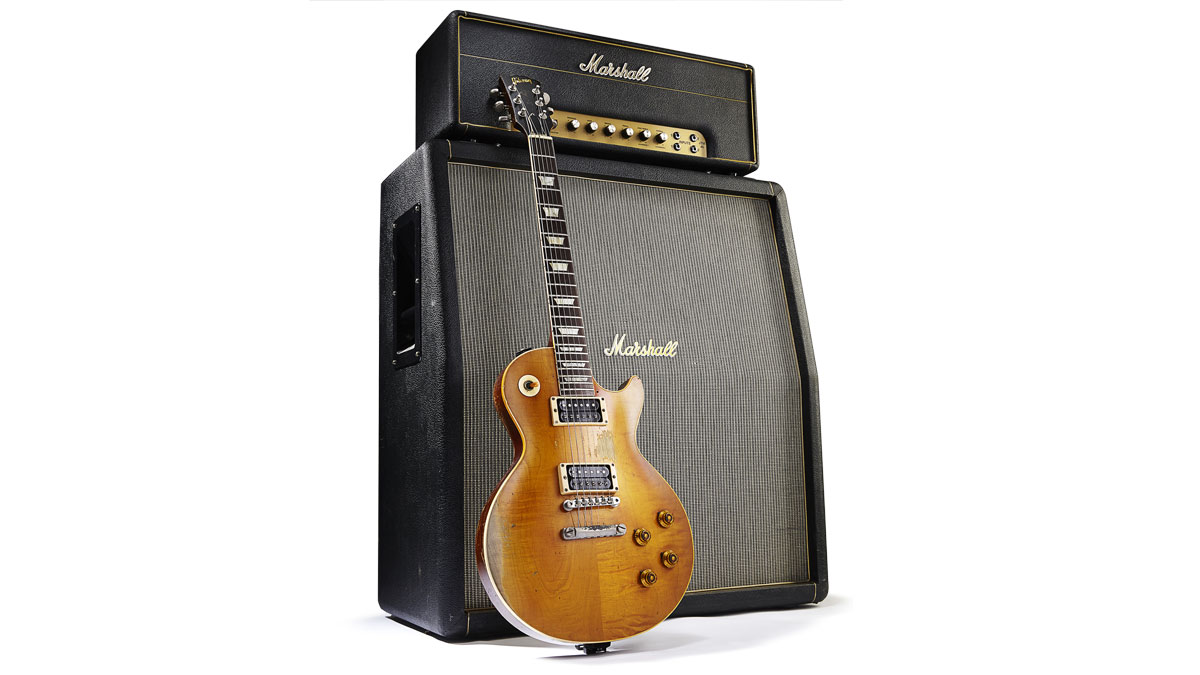
1959 Gibson Les Paul - Still Got The Blues
“Gary used this Les Paul and reissue JTM45 amp - 1989, serial number RI000011 - on the track Still Got The Blues,” Graham recalls, through a Marshall Guv’nor pedal, and Alesis Quadraverb in the headphone mix. It was a one-take, first-take solo, too.”
NEVILLE: “I have to confess I felt very small and insignificant when holding this guitar. One of those ‘not worthy’ moments, especially when I had to play some licks on it for our video presentation. Luckily, Gary liked his guitars set up exactly as I do, and so at least I felt at home with the action.
This is a guitar that Gary didn’t use much when he first got it, but that changed after the Still Got The Blues session
“I’ve played a few ’59s and, just like the others, this was very articulate and open sounding. Brighter than a modern Les Paul, I’d say. But kick in the Tube Screamer and it becomes a beast. Most of all, though, it was a privilege and an honour to even hold it.”
GRAHAM: “This is a guitar that Gary didn’t use much when he first got it, but that changed after the Still Got The Blues session and following tours, when it became possibly his most played guitar. It featured on many recordings and live shows across the 1990s and 2000s, only getting a ‘rest’ from around 2006/’07 onwards.
“I think we had it on the BB King farewell tour, but not much after that, as it was becoming too valuable to cart around, and as Gary had bought a bunch of newer LPs, Goldtops, plain tops, Sunbursts, aged, and so on, then they were getting used more and more.”
Marshall 1989 JTM45 and 1960 TV cab
“The Marshall 1960 TV cab was custom-made with that grille cloth at the Marshall factory and is part of an amp-and-cab setup that was made for the 1994 BBM tour,” says Graham.
“The set comprised SLP1959 heads, some modded into 1992 bass amps, along with 1960TV 4x12 cabs, 1960BX, 1960AX 4x12 cabs, plus the tall ‘B’ or straight version of the 1960TV angle cabs. It’s quite an impressive sight and sound when it’s all set out and fired up!”
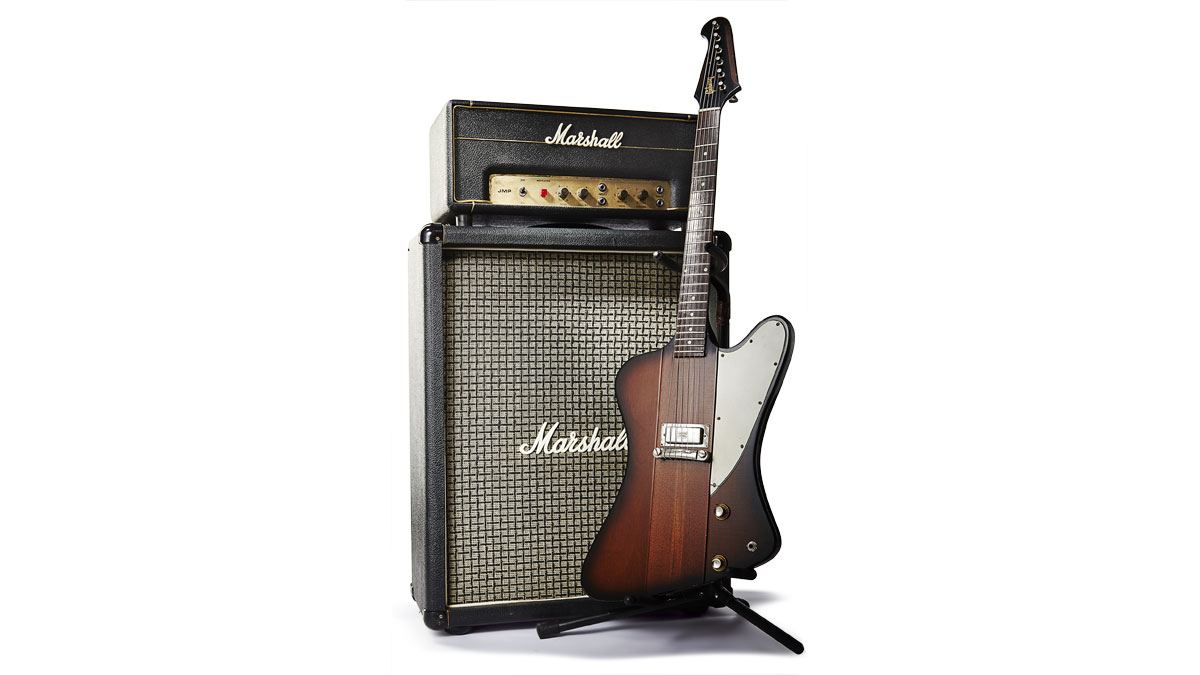
1964 Gibson Firebird #153314
One of the coolest guitars around, the ‘reverse’ Firebird’s headstock was fitted with rearfacing Kluson banjo tuners.
NEVILLE: “Shame I didn’t have a bottleneck with me for this, as it still has the action jacked up for when Gary used it for slide.
If an amp or guitar triggered a riff that could be developed into a song, then it was worth getting for that initial inspiration
“This is just like the guitar Clapton used in the last days of Cream and on the Blind Faith album, and clearly why Gary bought it for the BBM (Bruce, Baker, Moore) project. It’s a meaty old thing and if you know Sitting On Top Of The World from Cream’s Goodbye album, then that’s the tone. These are ace-looking guitars and make a real statement.”
GRAHAM: “Although this was bought in 1994 for the BBM project, it was not really featured on the album or live shows in that year.
“Currently, it has a Seymour Duncan mini-humbucker fitted, but the original pickup and replaced volume pot are included in the case. I should get round to putting it back as it was, and dropping the action to make it more playable!”
Marshall ’74 Lead And Bass 20 head
“Gary mostly acquired equipment items to use on recording sessions or live shows,” Graham Lilley recalls. “His reasoning was that if an amp, pedal or even a second-hand guitar triggered a riff, or different tone that could be developed into a song, then it was worth getting for that initial inspiration.”
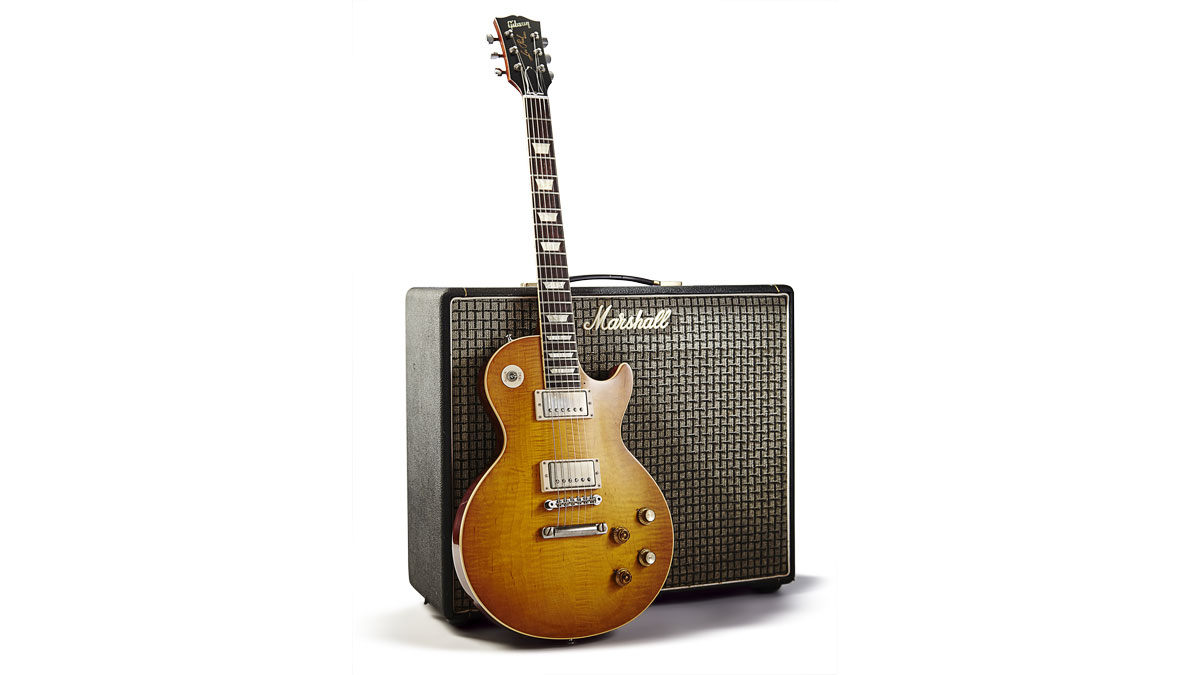
Gibson Les Paul Collector's Choice #1 'Artist Proof #3'
NEVILLE: “It was a lovely surprise to discover that this guitar had been wired so it was out of phase in the middle position.
“In non-aged ‘Sunburst’ livery and with a beautifully figured top, it looks fabulous and plays like any modern Gibson, with a reasonably fat but not baseball bat-type neck. Due to its bullet-proof provenance, this will excite a lot of interest in the auction.”
This will be a very rare item, as it’s #3 of possibly only three artist’s proofs. It’s stock from the factory, still with all the tags
GRAHAM: “This was one of the prototypes, an ‘artist final proof’ model of the Gibson Guitar Company Collector’s Choice #1 VOS. This is the Melvyn Franks model guitar, the non-aged version, as the aged versions were christened the Gary Moore model. This will be a very rare item, as it’s #3 of possibly only three artist’s proofs. It’s stock from the factory, still with all the tags.
“Unfortunately, this guitar arrived well after the model had been launched and quite possibly after Gary’s passing, for some reason, as up until then only the prototype of the aged version #CC1 had arrived, which Gary used on the Summer of Rock tour in 2010. It’s fitted with Bare Knuckle PG Blues humbuckers [with an out-of-phase in-between tone], replacing the out-of-phase Gibson pickups.
Marshall 1930 2x10 combo
“The Marshall 1930 2x10 combo dates from 1973-4 and was part of his ‘unofficial’ Marshall amp collection - a nice piece, which would overdrive nicely as you turned it up.
“I say ‘unofficial’ in so far as Gary didn’t set out to collect one of most types of Marshall amp, but he did have a few Marshall amps, cabs and combos tucked away, as he got so much use and enjoyment from plugging into one and letting rip, so to speak.
“Often it would be something he had owned previously, but had been lost in band moves and so on. So no doubt it was a little trip down memory lane for him, also.”
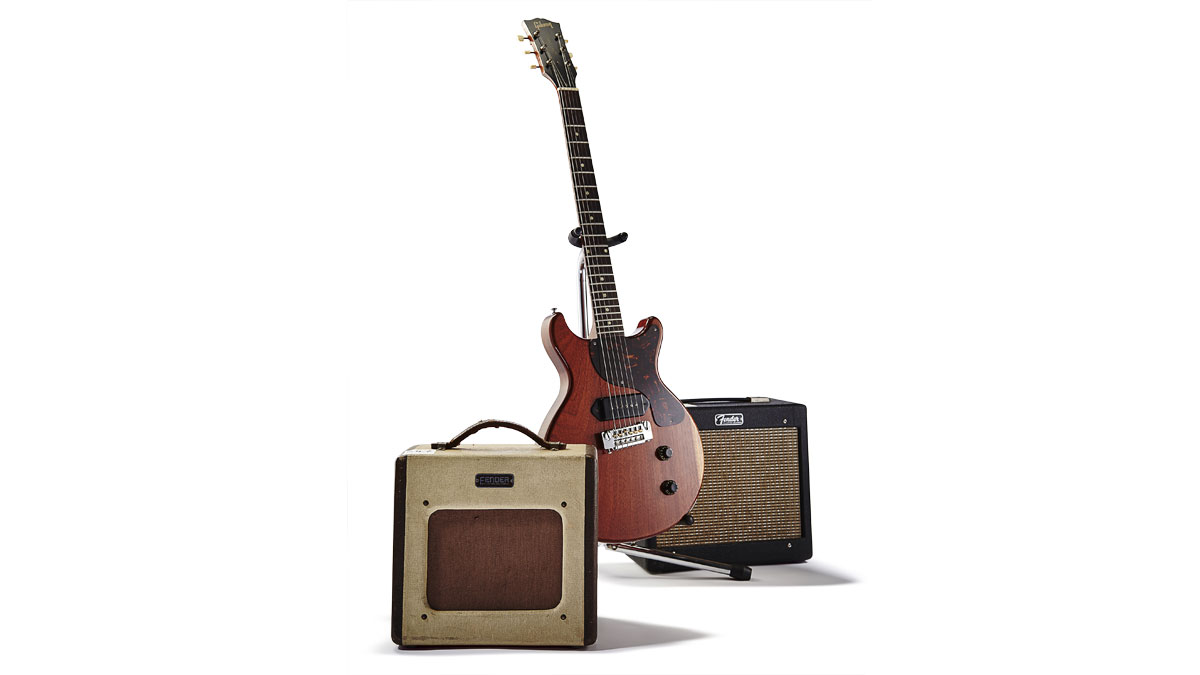
1959 Gibson Les Paul Junior #929342
Guitars like the ‘student’ Gibson Les Paul Junior and Fender’s Musicmaster were designed to go with similarly ‘beginner’ amps like these, but all became fully grown in the hands of Gary, Jimmy Page, Leslie West and many others.
NEVILLE: “These are superb guitars, but even those without links to a famous artist are fetching silly money now. The single P-90 at the bridge offers a dark and throaty range of sounds, especially if you are prepared to work the volume and tone controls.
The cream-and-brown Fender Champion dates from 1949 and is a very sweet little combo
“To my ears, they sound lighter than the single-cut version and a little heavier than the similarly equipped SG Junior. This one felt great, with a medium-fat neck and total fretboard access.”
GRAHAM: “This comes with the Bill Of Sale, and it was also mentioned in an article during the promotion of the Dark Days In Paradise album in 1996/7. Gary did fly on Concorde with it, on his way to Miami that year to oversee the mixing. It may also feature here and there on that album.”
Fender Champion
“The cream-and-brown Fender Champion dates from 1949 and is a very sweet little combo,” Graham says. “With just two inputs and a combined on/off volume control, which goes up to 12 - two more! - it’s got a vibe that’s all of its own.”
Fender 1964 Champ
“This is Gary’s ‘blackface’ 1964 Champ, again with a similar control layout,” Graham says. “It’s a little bit more robust than the ’49, with a solid chassis and slightly more chunkier styling than its older ‘brother’. But it works really well with harmonica, P-90 or humbucker-equipped guitars, as it adds a nice, thicker tone than the earlier model.”
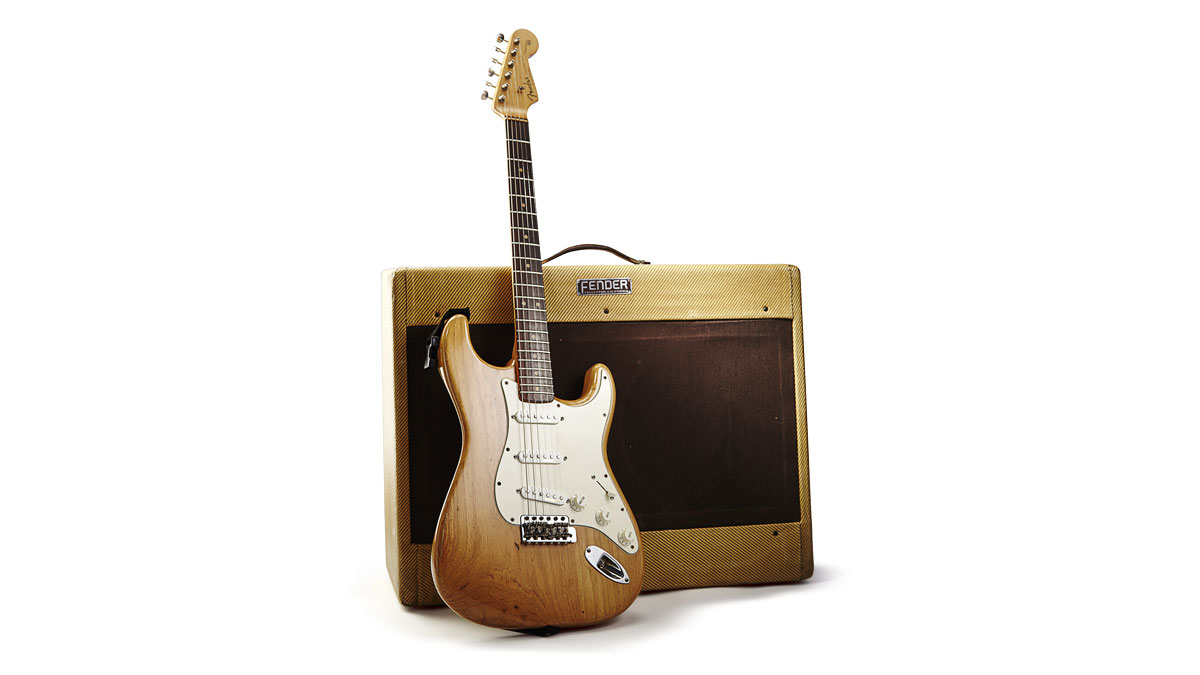
Refinished '63 Fender Stratocaster #L21725
NEVILLE: “This was a monster! Just as loud as the Les Paul, and almost as fat.
“Fitted with Kinman pickups, it was hum-free next to the Marshall 1974X I was demoing through, and it played like butter - it had been refretted with big wire but the fingerboard radius had been left at 7.25-inch radius, which made it feel rather special.
“I’m not a fan of stripped and refinished ‘natural’ Fenders, but I have to say it made it feel much more like a gigging workhorse and less like a scarily pricey artefact. Hand on heart (and price tickets notwithstanding), this one was my favourite.”
As seen on the footage from the Fleadh in Finsbury Park in 2001, and in the Blues For Jimi DVD release, from 2007
GRAHAM: “Originally a gift from the late Claude Nobs, founder of the Montreux Jazz Festival, the guitar required extensive work to return it to playable condition.
“This included a complete refret, new tremolo block, replacement machineheads, a rewire and the addition of a set of the Kinman AVN noiseless pickups. There is also an alternative complete electronics setup, mounted on a separate scratchplate, with Stratocaster pickups by Seymour Duncan.
“These were made for Gary, to give an additional set of tones in certain combinations of pickups when using the selector. So, only the body (stripped and clear lacquered), the neck and some hardware are ‘original’. As seen on the live footage of the TV broadcast from the Fleadh in Finsbury Park in 2001, and in the Blues For Jimi DVD release, from 2007.”
Fender 1952 Twin
“Gary picked up this ’52 Twin while in America in 1991 and the tweed had been recovered a few years earlier,” Graham recalls.
“He was in the early sessions for the After Hours album and wanted to branch out from the blues-rock tones of Still Got The Blues album, so a switch to Fender amplifiers such as Bassman, Tremolux, and Princetons, helped shape the writing and demos.”
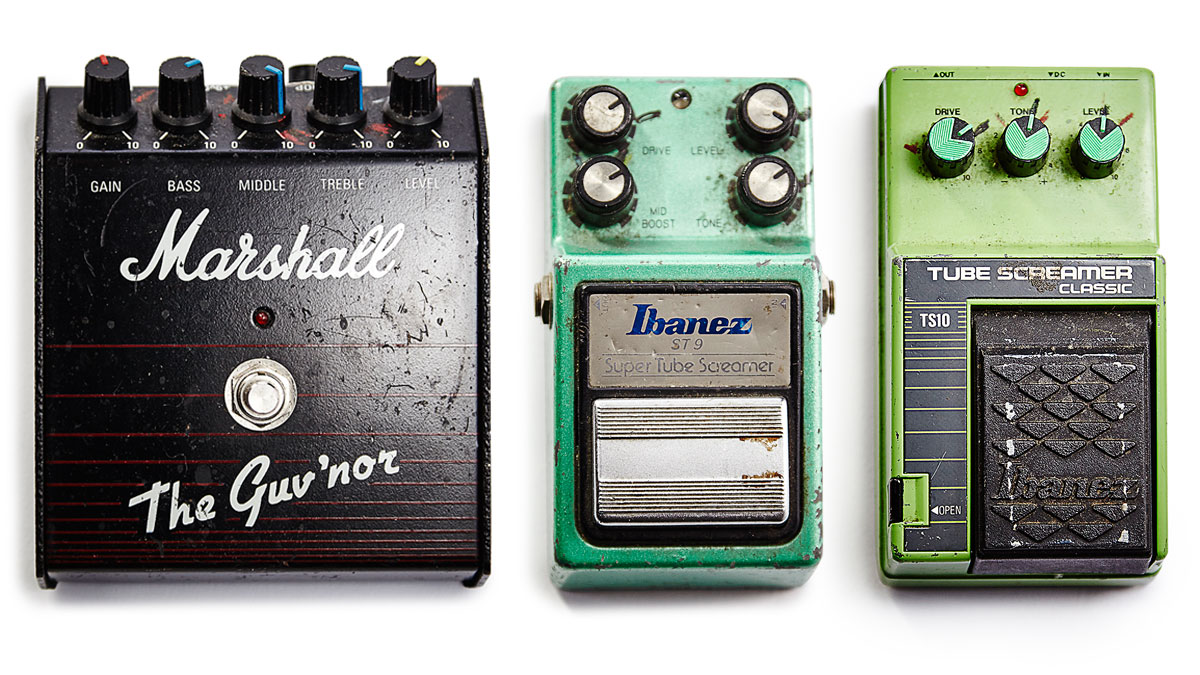
Effects pedals
Ibanez ST 9 ‘Super Tube Screamer’
An early Ibanez ST 9 ‘Super Tube Screamer’. Notice Gary’s own marker-pen settings for Drive, Mid Boost, Level and Tone.
“This was used by Gary for much of the second half of the 1980s, initially replacing the battered Boss DS-1, which Gary used in with his 1961 Fiesta Red Stratocaster.”
Ibanez TS10 Tube Screamer Classic
The Guv'nor pedal is the one used with the reissue JTM45 previously, and famously on the track Still Got The Blues
On this TS10 Tube Screamer Classic, Gary has drawn two sets of favoured settings: one for louder and cleaner; the other with lower output but higher gain for rockier tones.
“Gary used a number of these, replacing all his TS9, ST 9 variants, as he preferred the sound of this model,” Graham recalls.
Marshall The Guv'nor
Gary was one of the Marshall Guv’nor pedal’s greatest champions.
“The effects-loop socket was an interesting idea,” Graham says. “But it needed a Y-split jack lead, and then the Guv’nor could act as a kind of master switch for your whole effects chain, so a nice touch.
“This pedal is the one used with the reissue JTM45 previously, and famously on the track Still Got The Blues.”
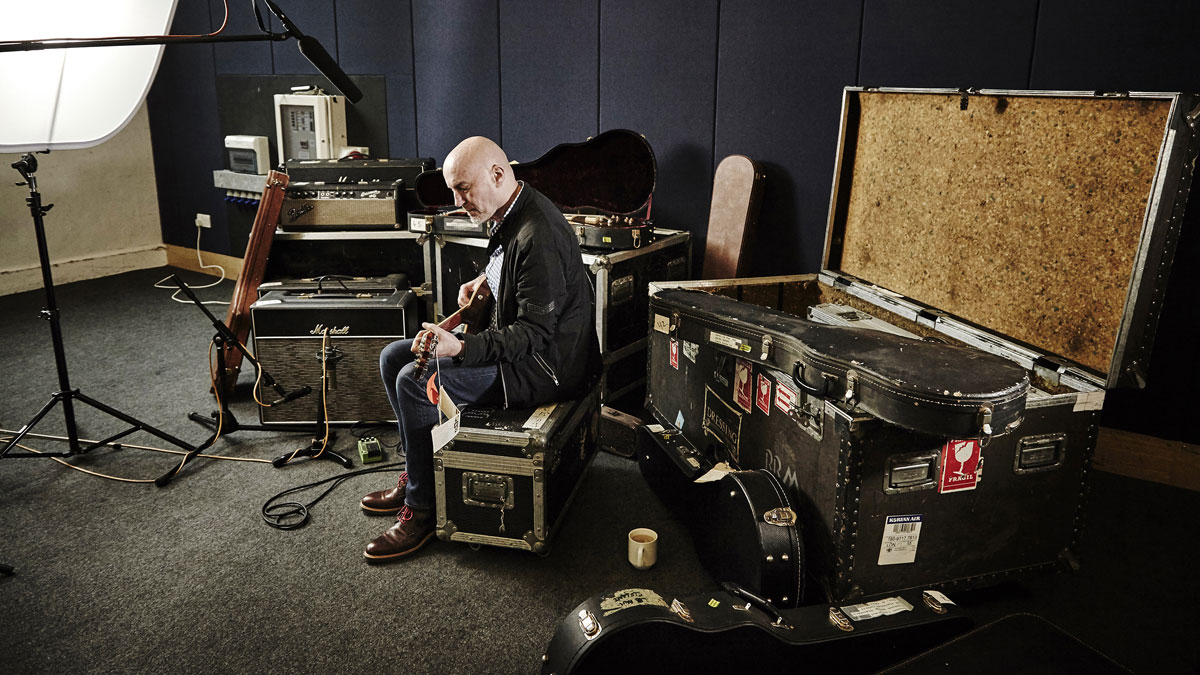
Now watch the video!
As part of our fascinating tour through Gary’s gear collection, Guitar Techniques editor Neville Marten, a MusicRadar contributor who knew Gary better than most music journalists and shared a stage with him from time to time, plugged in many of the items of gear discussed in this feature, to get a better impression of how Gary used these instruments while he was still with us.
With great respect, and a little understandable trepidation - those are some big, big shoes to fill - Nev agreed to step in front of the camera to demonstrate some of the hardware Gary relied on. To hear how some of this delectable hardware sounds, view our special Gary Moore gear demo below.
Don't Miss
Gary Moore: the lost interview - in-depth with a guitar legend
